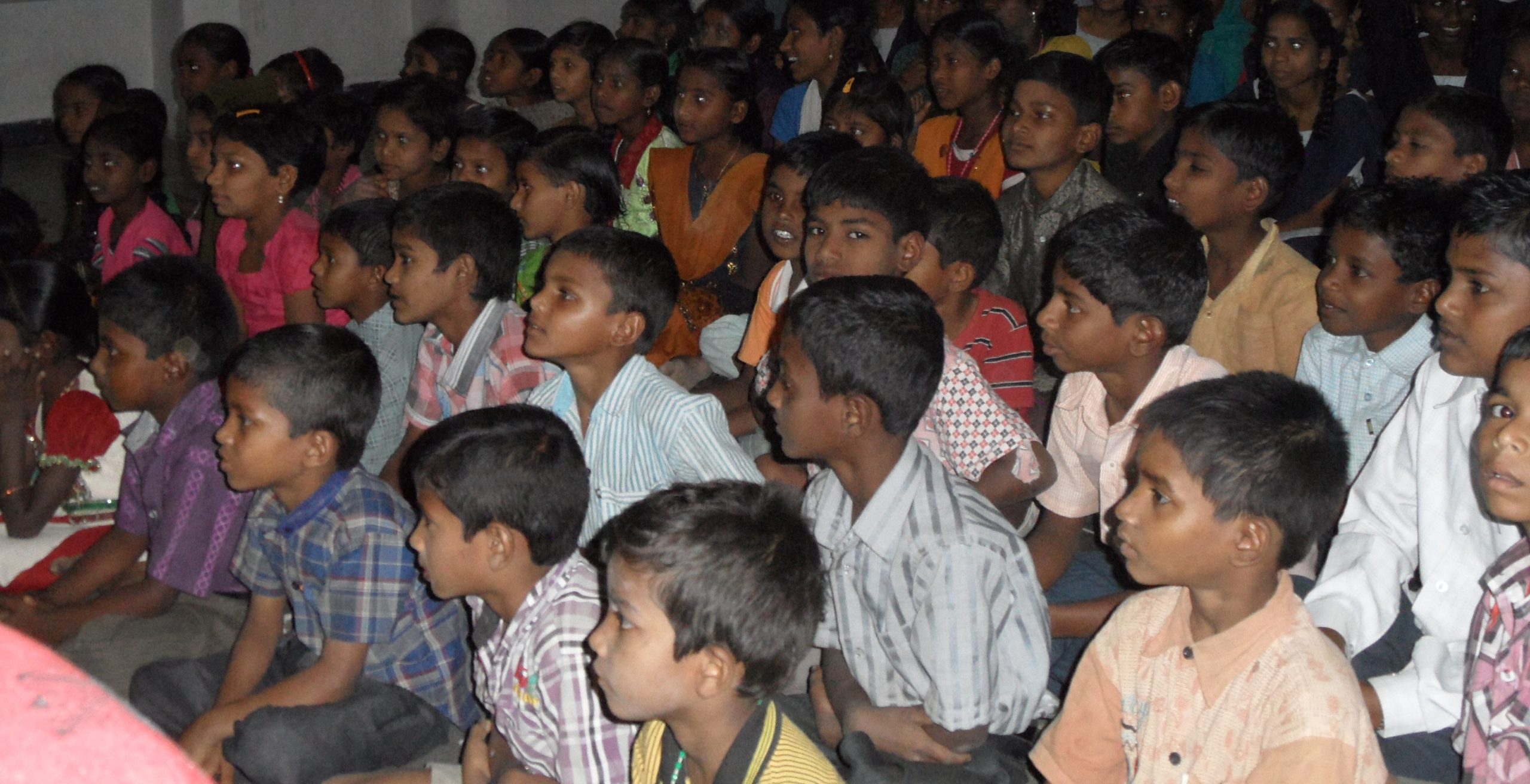Andhra Pradesh obtained the highest achieved level in the Performance Grading Index to assess the school education system.

Students in a school in Andhra Pradesh. (Wikimedia Commons)
Over the years, Andhra Pradesh appears to have come a long way in strengthening the school education system.
Andhra Pradesh, the only one from the south along with two other states — Gujarat and Rajasthan — are the new entrants to the highest achieved level so far, ever since the Centre launched the Performance Grading Index (PGI) to assess the school education system. PGI was launched in 2017-18.
Ever since the YSRCP came to power, the YS Jagan Mohan Reddy government laid a special focus on the school education system by giving thrust and emphasis on creating better infrastructure facilities in schools and by introducing programmes like Mana Badi: Nadu-Nedu that encourages children to attend government schools.
The Department of School Education and Literacy (DoSE&L), Ministry of Education on Thursday, 3 November, released the Performance Grading Index (PGI) for States/UTs for 2020-21, which is termed a unique index for evidence-based comprehensive analysis of school education system across State/UTs.
So far, DoSE&L has released the PGI report for 2017-18, 2018-19, and 2019-20.
Andhra Pradesh, along with six other states, attained Level II (score 901-950) in 2020-21, compared to none in 2017-18 and four in 2019-20.
Andhra Pradesh scored 728 points in 2017-18, 725 in 2018-19, 811 in 2019-20, and 902 in 2020-21 (Latest)
Significantly, the scores in the infrastructure and facilities domain have seen an upward trend in Andhra Pradesh.
The score under the infrastructure domain was 99 out of 150 in 2017-18, 104 in 2018-19, 117 in 2019-20, and 127 in 20120-21.
The PGI structure comprises 1000 points across 70 indicators grouped into two categories, Outcomes and Governance Management (GM).
These categories are further divided into five domains — Learning Outcomes (LO), Access (A), Infrastructure& Facilities (IF), Equity (E) & Governance Process (GP).
As done in the previous years, PGI 2020-21 also classified the States/UTs into ten grades; the highest achievable Grade is Level 1, which is for State/UT scoring more than 950 points out of a total of 1000 points.
The lowest grade is Level 10 is for a score below 551.
Centre said that PGI aims to propel States and UTs towards undertaking multi-pronged interventions that will bring about the much-desired optimal education outcomes covering all dimensions.
The PGI is expected to help States and UTs to pinpoint the gaps and accordingly prioritize areas for intervention to ensure that the school education system is robust at every level.
Notably, the neighbouring Telugu state, Telangana, has dropped the score compared to the last PGI. Telangana has been bracketed in Level 5 in the latest PGI report.
Telangana’s PGI score stands at 676 in 2017-18, 757 in 2018-19, 772 in 2019-20 and 754 in 2020-21.
Glaringly, Telangana’s performance in Equity and government processes domains has become negative compared to the last PGI.
Through the Mana Badi-Nadu Nedu programme, the government aimed to transform and strengthen the existing infrastructure of the schools. It was done in a mission mode in a phased manner over three years, starting from 2019-20.
Under this programme, nine infrastructure components have been up for improvement. Provisions like toilets with running water, drinking water supply, major and minor repairs, electrification with fans and tube lights, furniture for students and staff, green chalkboards, painting to schools, English labs, and compound walls are among them.
The project covers a total of 44,512 schools, including residential schools, run by all managements, viz., School Education Department, Panchayat Raj, Municipal Administration, Social Welfare, BC Welfare, Tribal Welfare, Minority Welfare, Juvenile Welfare and Fisheries Departments.
In Phase-I, 15,715 schools have been taken up through the government implementing agencies – Panchayat Raj Engineering Department, AP Samagra Shiksha Society, APEWIDC, Municipal & Public Health Engineering Department and Tribal Welfare Engineering Department.
In a recent review meeting on the school education department, Chief Minister YS Jagan Mohan Reddy said that the reforms helped the number of students grow up to 42 lakhs now, from 37 lakhs in 2018-19.
Of the total number of 45,000 Government schools, the Nadu-Nedu scheme has been already implemented in 15,000 schools. Another 22,000 schools will implement it this year, with the rest implementing it next year.

May 17, 2024

May 17, 2024

May 16, 2024

May 16, 2024

May 16, 2024

May 16, 2024